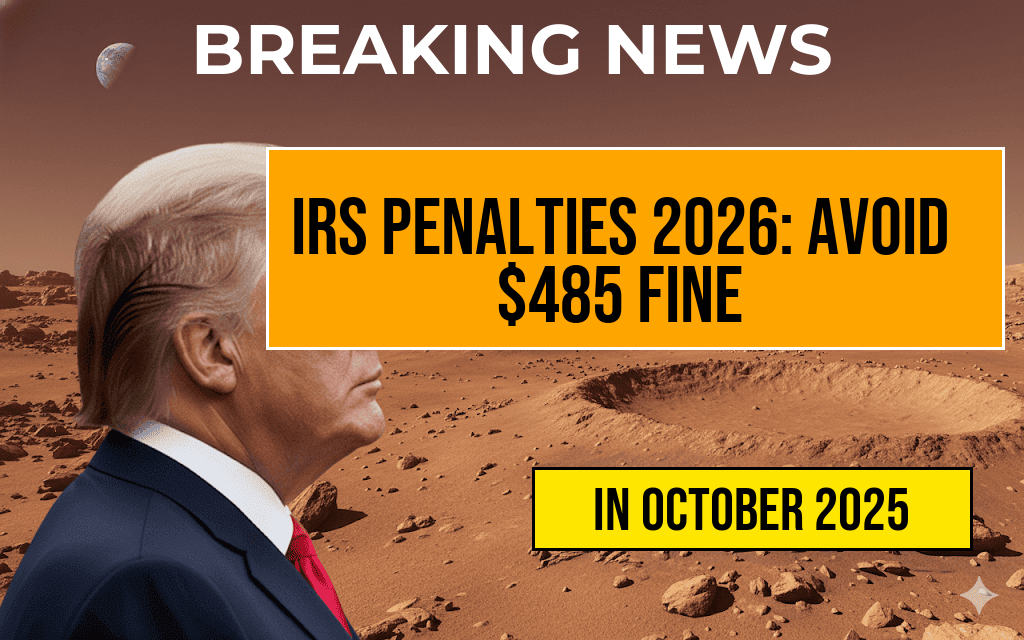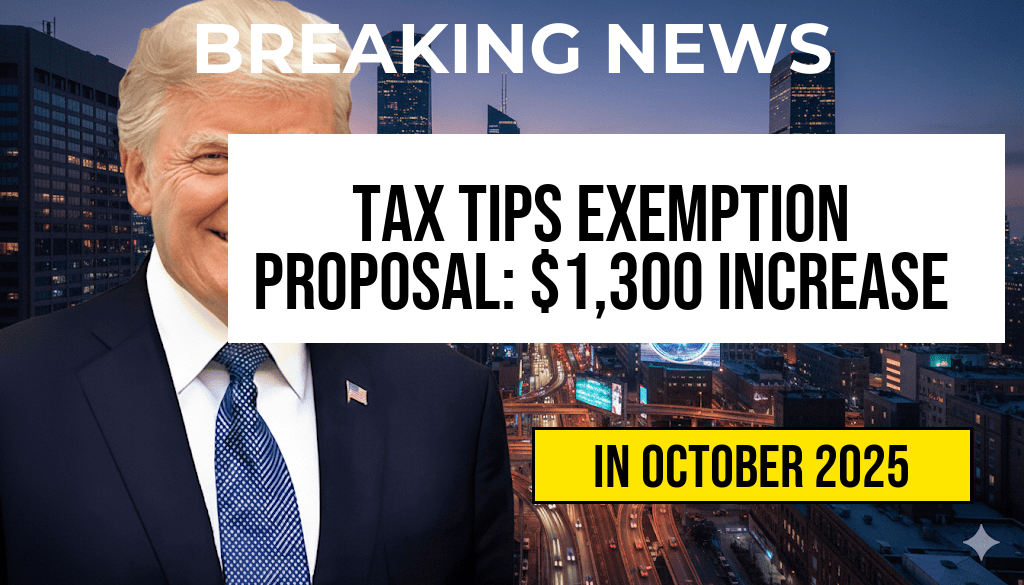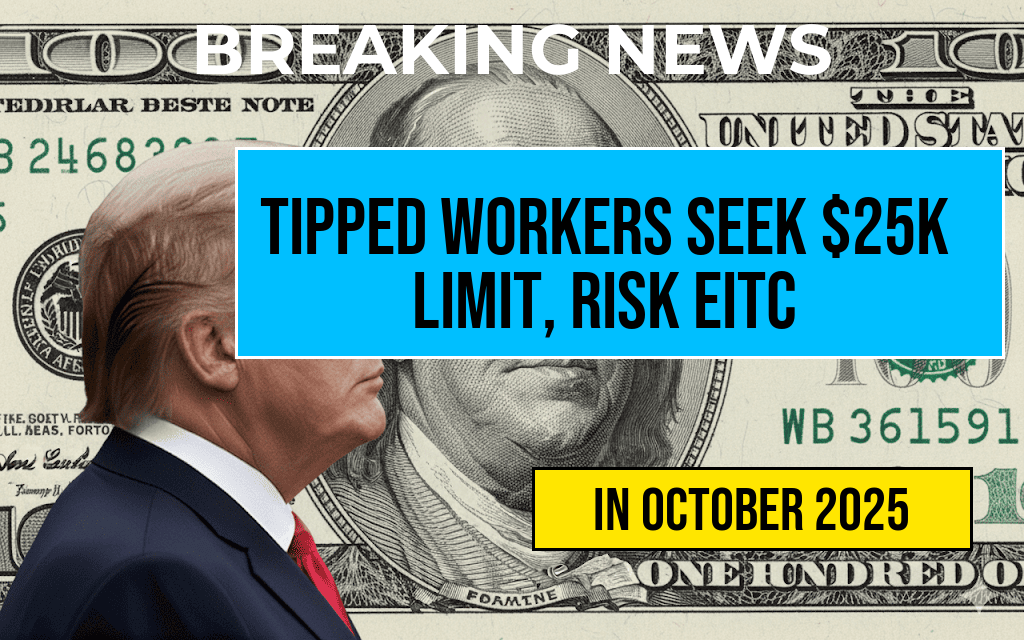IRS Penalties in 2026: Avoid a $485 Late-File Fine as Penalties Increase
Taxpayers should prepare for significant changes in IRS penalty structures set to take effect in 2026, with the potential for late-filing fines to reach as high as $485 per return. The Internal Revenue Service has announced adjustments to penalty amounts and deadlines, emphasizing the importance of timely filing and payment to avoid steep charges. As the tax landscape evolves, understanding these updates becomes essential for individuals and businesses aiming to minimize costs and remain compliant with federal regulations.
Key Changes to IRS Penalties Starting in 2026
The IRS has historically increased penalties annually, but upcoming adjustments in 2026 will notably impact taxpayers. The primary change involves the maximum late-filing penalty rising from current levels to a cap of $485 per return for most taxpayers, with higher thresholds for those with higher incomes or complex filings. Additionally, the period during which penalties accrue will be extended, providing the IRS more leverage to enforce late payment charges.
Understanding the Penalty Structure
| Penalty Type | Current Maximum | 2026 Maximum | Notes |
|---|---|---|---|
| Late Filing Penalty | $435 (for 2025) | $485 | Applies if returns are filed after the deadline |
| Late Payment Penalty | 0.5% of unpaid taxes per month | 0.5% with increased caps | Capped at 25% of unpaid taxes |
| Interest on Unpaid Taxes | Variable rate (~3-4%) | Adjusts quarterly based on federal rates | Compound daily until paid |
The late-filing penalty is calculated per return, and if a taxpayer files more than 60 days late, the minimum penalty will be the lesser of $435 or 100% of the unpaid tax. The increases in these penalties underscore the need for proactive tax planning before deadlines pass.
Why the Penalties Are Increasing
The IRS cites inflation adjustments and the desire to motivate timely compliance as primary reasons for the increased penalty caps. With the rising cost of living and the growing complexity of tax laws, the agency aims to enforce stricter penalties to deter negligent or intentional non-compliance. According to IRS officials, these measures are intended to enhance revenue collection and improve overall tax system integrity.
Strategies to Avoid Penalties
- File Early or On Time: The simplest way to avoid late-file penalties is to submit returns by the deadline, typically April 15, unless extended.
- Request Extensions: Taxpayers can request an automatic extension to file, but this does not extend the time to pay owed taxes.
- Pay Estimated Taxes: For those who expect to owe significant amounts, making estimated payments can prevent late payment penalties.
- Stay Informed About Deadlines: Changes in filing dates or tax laws may affect your schedule; monitoring IRS updates ensures compliance.
Additional Penalty Considerations
Beyond late filing and payment penalties, taxpayers should be aware of other potential charges, such as penalties for inaccuracies or failure to provide required documentation. The IRS also imposes interest on unpaid taxes, which compounds daily, increasing the total amount owed over time. For those facing financial hardship, options like installment agreements or penalty abatements may reduce the overall burden if applied for proactively.
Implications for Taxpayers and Businesses
Business owners, self-employed individuals, and high-income earners are particularly vulnerable to increased penalties, especially if they delay filings or underpay taxes. The rising penalty caps make timely compliance more critical than ever. The IRS has also expanded its enforcement efforts, including increased audits and automated notices, reinforcing the importance of accurate and punctual filings.
Resources and Further Reading
- Internal Revenue Service (Wikipedia)
- Forbes: IRS Penalties Are Rising — Here’s What Taxpayers Need To Know
- IRS.gov: Penalty for Failure to File
Taxpayers are encouraged to consult with tax professionals to develop strategies that minimize liability and ensure compliance as penalty thresholds increase in 2026. Staying ahead of deadlines and understanding the evolving penalty landscape can save individuals and businesses from substantial financial setbacks.
Frequently Asked Questions
Question
What is the late-file penalty amount projected for 2026?
Question
How can taxpayers avoid the increased IRS penalties in 2026?
Question
When is the deadline to file taxes to prevent a $485 late-file fine?
Question
What are the consequences of failing to pay taxes on time in 2026?
Question
Are there any penalty exceptions or relief options available for taxpayers facing penalties in 2026?










